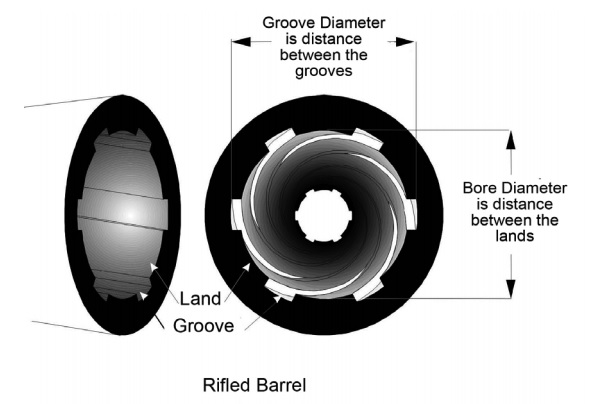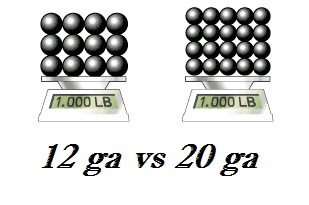What Should I Know About Calibre?
 In this article we will discuss calibre - what you should know about calibre to pass PAL licensing exam. Long story short, you should know the definition, how it is measured and the difference between gauge and calibre.
In this article we will discuss calibre - what you should know about calibre to pass PAL licensing exam. Long story short, you should know the definition, how it is measured and the difference between gauge and calibre.
Let's start with the definition.
Rifled firearms
Definition: Calibre is the distance between the lands (land-to-land) or between the grooves (groove-to-groove) of the rifling inside the barrel (NOTE: Calibre sizes rifled firearms only. We will talk about shotguns below). Please refer to the picture on the right. Measuring land-to-land or groove-to-groove is a convention and depends on specific ammunition.
Measuring: .Calibre is measured either in mm or percent of inch. For example, 9mm or .50 (.50 means 0.5 or 50% of inch).
IMPORTANT! Cartridges with different names are not interchangeable. For instance, 7mm Remington Magnum and 7mm Mauser.
IMPORTANT! You should always match data stamps of the firearm and ammo.
Shotguns
In case of smooth-bore barrel, gauge sizes firearms, not calibre. And it has slightly different meaning.
 Definition: Gauge is a diameter of a solid sphere of lead that fits the bore. If you make 12 identical spheres of a pound of lead, the diameter of each sphere is 12 gauge, if 20 - than 20 gauge. By the way, you can see that 12ga is bigger that 20ga. Please, refer to the picture for the explanation.
Definition: Gauge is a diameter of a solid sphere of lead that fits the bore. If you make 12 identical spheres of a pound of lead, the diameter of each sphere is 12 gauge, if 20 - than 20 gauge. By the way, you can see that 12ga is bigger that 20ga. Please, refer to the picture for the explanation.
Gauge is abbreviated "ga." or "ga". Sometimes you may find just "G".
Gotcha from exam: There is .410 gauge. It is an exception from the rule: .410 is the actual bore size, not gauge. Keep this in mind when answering questions regarding comparison of gauges.
That was the bare minimum of what you should know about calibre to pass CFSC and CRFSC exam.